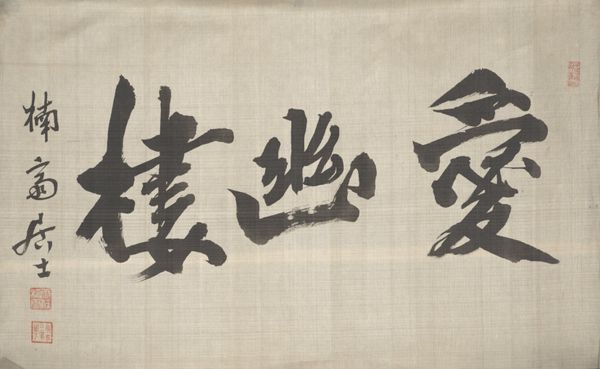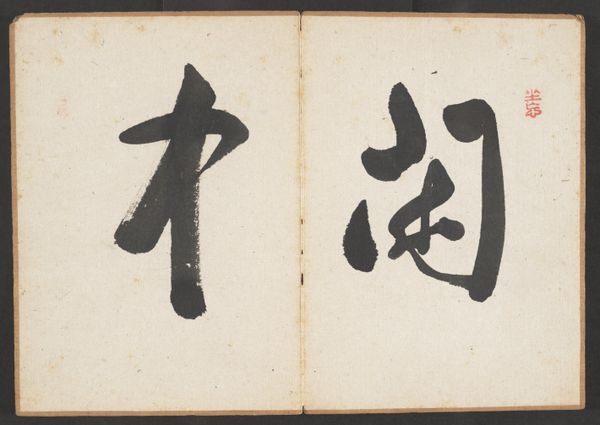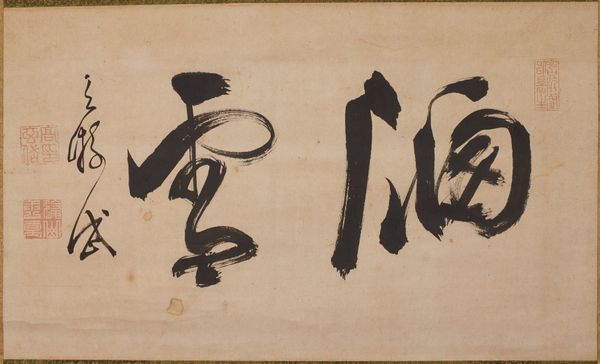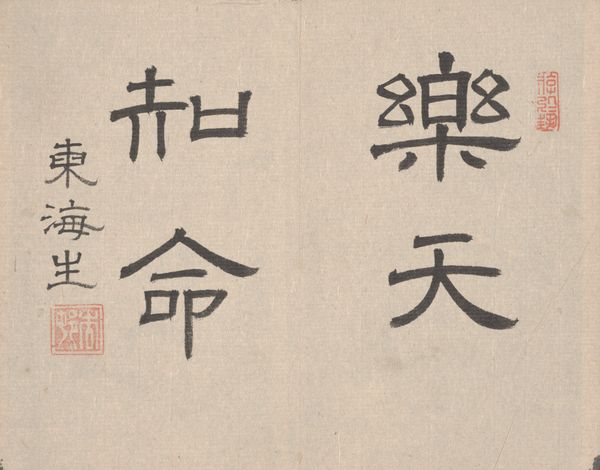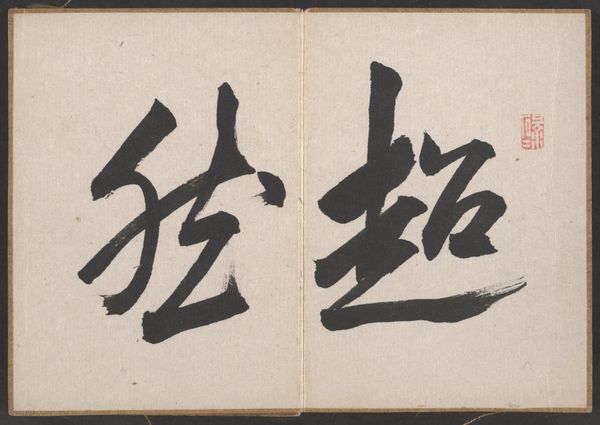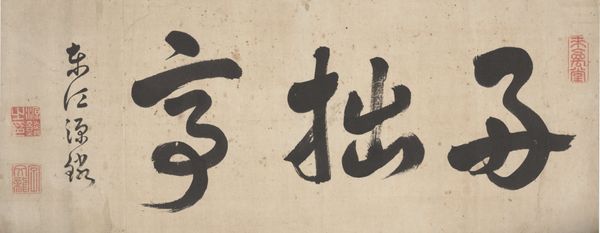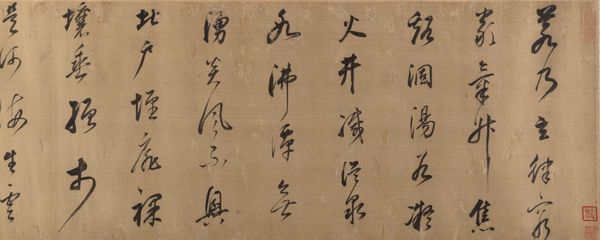
drawing, ink-on-paper, ink
#
drawing
#
script typography
#
hand-lettering
#
asian-art
#
hand drawn type
#
typography
#
hand lettering
#
japan
#
ink-on-paper
#
ink
#
hand-drawn typeface
#
fading type
#
typography style
#
sketchbook art
#
calligraphy
#
small lettering
Dimensions: 11 5/16 × 30 3/4 in. (28.73 × 78.11 cm)
Copyright: Public Domain
Kawamura Keikō created this work “Laziness is Truth,” a calligraphy piece, with ink on paper. Kawamura was born during the Meiji era, a period of rapid modernization and Westernization in Japan. During this period, many Japanese artists grappled with the tension between tradition and modernity. Kawamura was a female artist in a male-dominated society, and she navigated the complexities of her identity through her art. Her choice of calligraphy, a traditional art form often associated with masculine authority, can be interpreted as a deliberate assertion of her presence in the art world. The phrase "Laziness is Truth" challenges conventional notions of productivity and diligence. What does it mean for an artist, particularly a woman in a patriarchal society, to claim laziness as a form of truth? Perhaps it’s a commentary on the societal expectations placed on women to be constantly active and productive, or maybe it’s an introspective meditation on the nature of artistic creation. "Laziness is Truth" invites us to contemplate the value of rest and reflection in a world that often equates worth with productivity, offering a subversive commentary on gender, labor, and artistic expression.
Comments
minneapolisinstituteofart almost 2 years ago
⋮
Little is known about Kawamura, a woman calligrapher who was active in the early twentieth century. Born in modern-day Shizuoka prefecture to the west of Tokyo, she was born into a scholarly family who focused on Chinese literature.Kawamura excerpted this enigmatic statement from a poem by the Chinese poet Du Fu: “I come close up to recognize the elder in Emei Mountain, he knows my principle that laziness is truth.” In the original poem, Du Fu expresses his lack of interest in pursuing secular wealth and power. Kawamura displays her knowledge of Chinese poetry andcalligraphy in these three characters, written in clerical script.懶是真Laziness is Truth
Join the conversation
Join millions of artists and users on Artera today and experience the ultimate creative platform.
